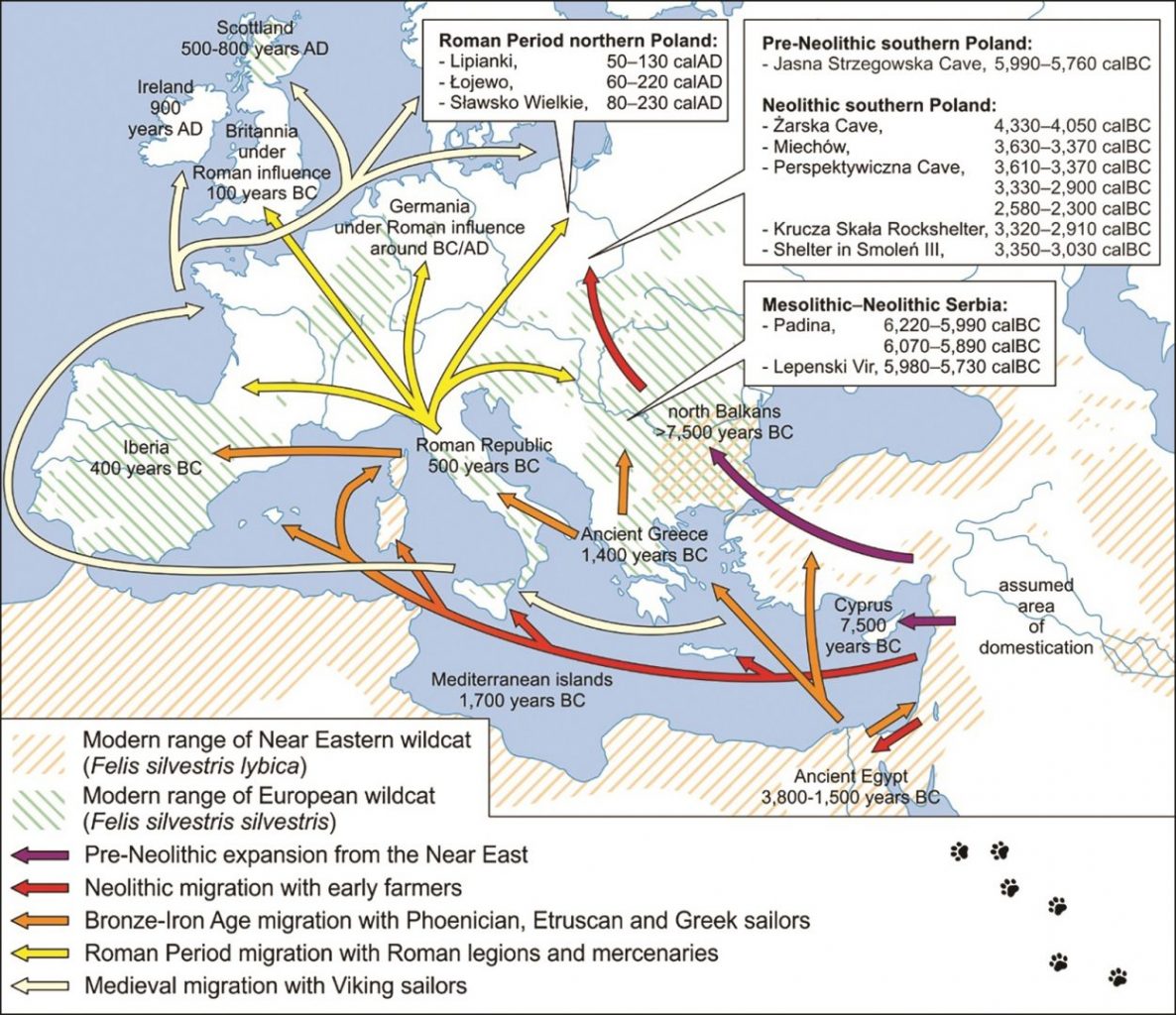A new international project studying the origin and history of cats is investigating evidence of an ancient feline migration into Europe.
Previous research had recovered DNA from the Near Eastern wildcat, the ancestor of modern domestic cats, from ancient sites in Central Europe dated to 3000 BC. Such finds preceded the establishment of domestic cats in the region by millennia, which is believed to happened during the Roman period.
“This raised questions about cats’ way from the Near East to Central Europe and their relationships with humans, including their domestication status,” said Dr Danijela Popović, from the University of Warsaw.
As such, Dr Danijela and a team of researchers began a new research project combining palaeogenetics, zooarchaeology and radiocarbon dating to study the origins and history of the cat in Central Europe. Their preliminary results are published in the journal Antiquity.
One key finding is further evidence of Near Eastern wildcat genes in European specimens before the Neolithic, when the first farmers began migrating into Europe. “This means that their dispersal through Europe preceded the first farmers’ arrival, so these cats probably were still wild animals that naturally colonised Central Europe,” said Dr Popović.

Such a timeline raises many further questions about this migration, such as whether a relationship developed between these early cats and ancient farming communities, how far into Europe they reached, and whether there is evidence of them mating with the native European wildcat. The team hopes their project will shed light on some of these issues.
Additionally, the researchers also expect that the high-resolution data obtained in this project will help determine when and how domestic cats appeared in Central Europe, as well as their migration routes. This could also show how it was connected to human history and how much it impacted the European wildcat’s natural population.
“We believe that our results will be significant for the conservation management of European wildcats,” said Dr Popović.
The team also found domestic cats were bred smaller over time. Analysis of the physical changes in domestic cats over the millennia revealed that Roman housecats were, on average, larger than their modern counterparts. Over the next few centuries, they decreased in size, becoming slightly smaller than modern cats during the Middle Ages.
The team hopes they will be able to illuminate many more aspects of cats’ history before the project is over. “We believe that current research will allow us to understand the complexity of cat-human and cat-wildlife coexistence in Central Europe from the earliest moments until recent times,” said Dr Popović.
https://doi.org/10.15184/aqy.2022.128
Header Image Credit : Antiquity





